Home » Municipal Corner » Planning Guides » Conservation Subdivision Design Guide » Design Elements
Design Elements
Good design is essential for the creation of successful conservation subdivision developments. To aid municipalities in assessing the design of proposed subdivisions and in crafting their ordinances to promote good design, the Chester County Planning Commission identified a number of Design Elements that are important in ensuring development proposals meet the spirit of the ordinance and result in a high-quality and liveable community. The Design Elements are described in this section, and each includes ordinance considerations, sample ordinance language, and examples of local conservation subdivisions where the Design Element has been used successfully.
By definition, conservation subdivisions prioritize the vitality of the development's open space and the preservation of the site's natural resources. Aside from this, some Design Elements may be more important than others depending on the municipality's goals and the developer's vision. Whatever the goals for the site, municipalities should ensure their regulations are specific enough to achieve the intent of the ordinance and flexible enough for the site design to be customized to best take advantage of its existing features.

Natural Resource Protection
Preserving natural resources and integrating them into a new subdivision's site design can greatly reduce the development's impact on the site and can enhance the functionality of the open space for wildlife, water quality, and overall environmental health.
Landscaping
Preserving existing vegetation or planting new landscaping can significantly impact a development's sense of place. Landscaping choices can bolster environmental heath and can provide effective screening, helping the development to better blend into the surrounding environment.
Stormwater and Sewage Management
Development is one of the biggest contributors to degraded water quality, but site design that includes nature-based solutions like green stormwater infrastructure and low-impact design that mimic natural processes can provide both water quality and economic benefits.
Scenic View Protection
Cluster and Conservation subdivisions often occur in rural areas and can interrupt treasured scenic views. Identifying important views early in the design process and taking steps to mitigate their disruption through the development's design can help protect these views for both passers by and residents of the development.
Housing Variety
Allowing for a variety of lot types and sizes can enhance sense of place and community, and can expand flexibility to accommodate existing conditions.
Open Space Design
The use and design of open space within the development is central to the spirit of conservation subdivisions. Ordinances should carefully consider how much open space to require and how it should be used based on the municipality's unique needs and features.
Vehicular Facilities
A development's roadway system can play a major role in how traffic moves through the development and how safe the development feels for pedestrians.
Parking Design
Often characterized by smaller lots, providing adequate parking can present design challenges in conservation subdivisions. The best parking scenarios minimize the presence of vehicles at the streetscape.
Pedestrian Facilities
Sidewalks and trails are valuable amenities within conservation subdivisions, and their design should be dependent on their use and on the context of the proposed subdivision.



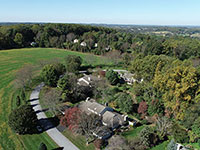 Scenic View Protection Design Elements
Scenic View Protection Design Elements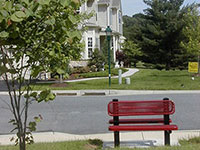 Open Space Design Elements
Open Space Design Elements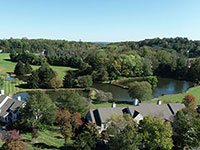 Housing Variety Design Elements
Housing Variety Design Elements Natural Resource Protection Design Elements
Natural Resource Protection Design Elements Vehicular Facilities Design Elements
Vehicular Facilities Design Elements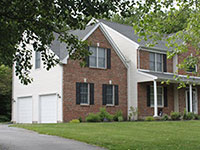 Parking Design Elements
Parking Design Elements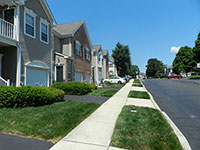 Pedestrian Facilities Design Elements
Pedestrian Facilities Design Elements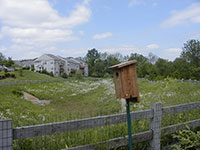 Landscaping Design Elements
Landscaping Design Elements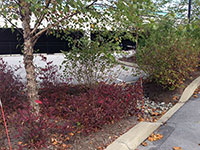 Stormwater and Sewage Management Design Elements
Stormwater and Sewage Management Design Elements